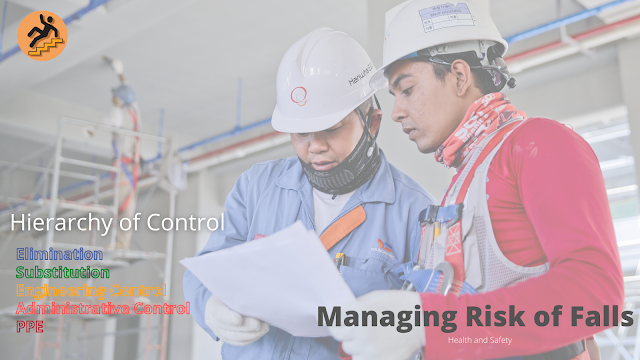Heat Stress | Health and Safety
Exposure to high/extreme
temperatures or heat/hot environment can cause serious ill-health and/or even death.
Ensuring that your body is regularly hydrated and protected from Sun during hot
months. It is essential to maintain balance for performing well at work. Risk
factors for heat illness include high temperature and humidity, direct sun
exposure, no breeze or wind, low liquid intake, heavy physical labor, wearing
non-breathable waterproof clothing, no controls are in place to reduce the
impacts of equipment that radiates heat and the workers body not being
acclimated to working in a hot environment.
The risk level increases with the
heat index as well, so caution must be taken anytime the heat index is above 91°F.
following are the two most serious illnesses that may result from exposure to
heat in the workplace.
Heat Stress Signs and Symptoms:-
1. Heat stroke this is a medical
emergency that may result in death. Signs of heat stroke include confusion,
loss of consciousness and seizures. If a worker show signs or symptoms of
heatstroke get medical help immediately and call ambulance.
2. Heat exhaustion is the most serious
heat related health problem. The signs and symptoms of heat exhaustion are
headache, nausea, dizziness, weakness, irritability, confusion, thirst, heavy
sweating and a body temperature greater than 100.4°F. There are precautions that can be taken when temperatures
are high and the job involves physical work.
(a) Hazard Identification- learn
to recognize hazards such as high temperatures, humidity levels, Sun and other thermal
exposures, work demands and clothing or PPE risk factors.
(b) Using Heat Identification Tools to evaluate your environment on the job site such as national
weather service heat index.
(c) Precaution to Block Out the Sun’s Rays,
(d) Cover
up where Tightly Woven Clothing that blocks out light, try this test place your
hand between a single layer of your clothing and a light source if you can see your
hand through the fabric the garment offers little protection.
Heat Stress Safety and Prevention:-
Use sunscreen, a sun protection
factor of at least 30 or higher is recommended. If you want to block both UVA
and UVB rays with a broad-spectrum, sunscreen to guard against skin cancer. be
sure to follow application, directions on the bottle, wear UV absorbent safety
glasses, they don't have to be expensive but they should block 99 to 100% of
UVA and UVB radiation. Wear a full brim hard hat to keep the Sun off your neck,
ears, nose and scalp. limit exposure rays are most intense between 10 a.m. And
2 p.m. if you're unsure about the sun’s intensity, take the shadow test, if your
shadow is shorter than you, the sun's rays are the days strongest.


.png)
.png)


Comments
Post a Comment